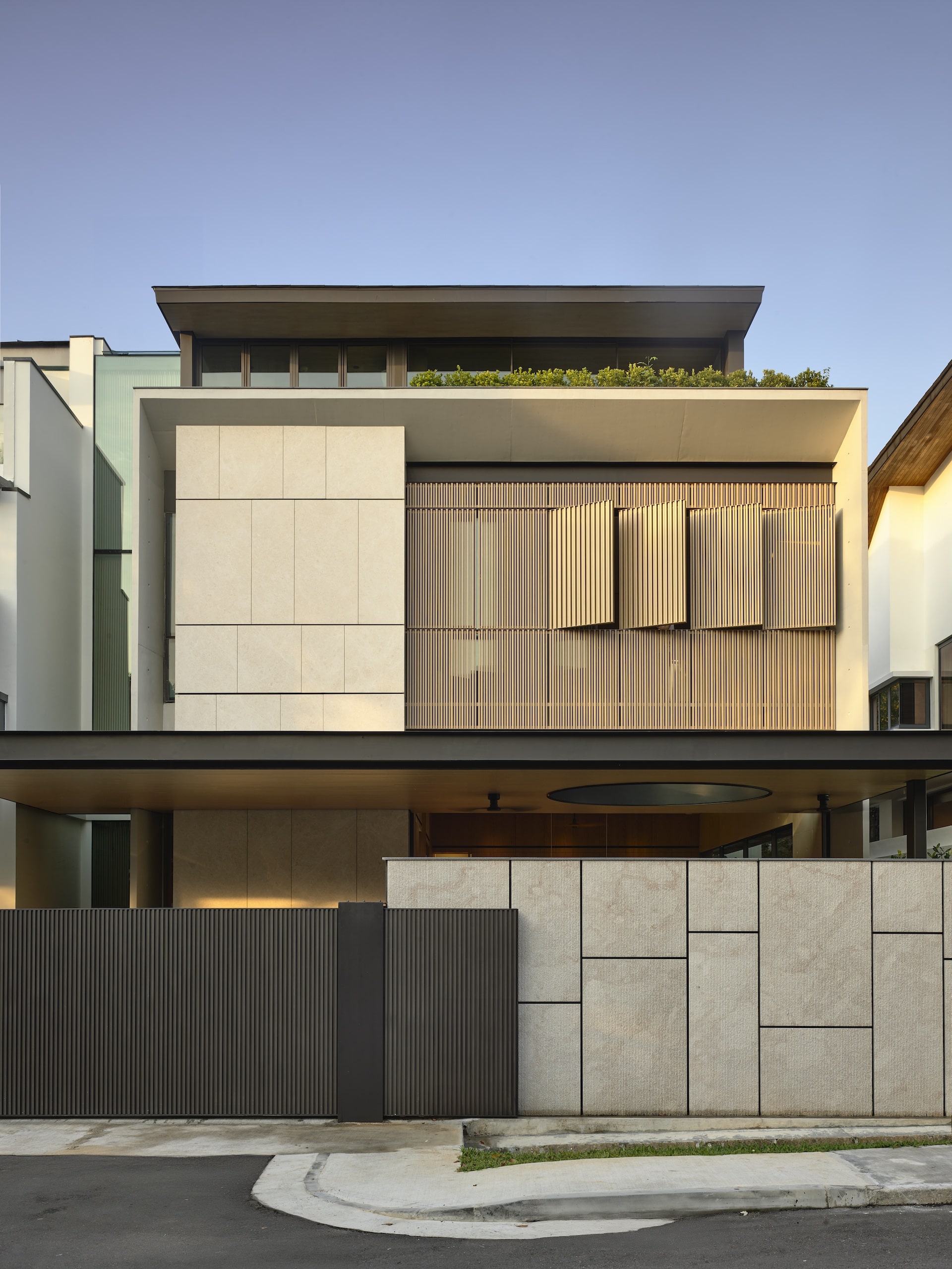
What does a family house need? Most fundamentally, it has to be functional for both social and private activities, accommodate the hard knocks of children at play while also offering a sense of conviviality. An added value would be spaces that can adapt to shifting demographics when children grow and the owners grow older.
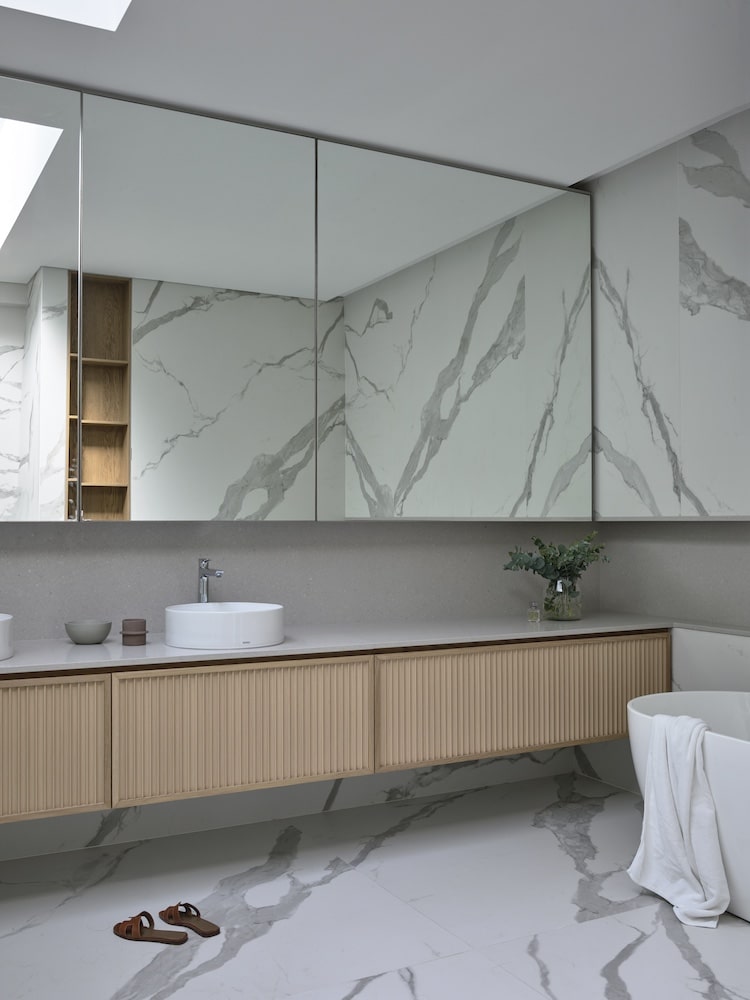
A couple, who live here with their two young sons and a helper, wanted a comfortable and contemporary house with these qualities, as well as rooms for working from home, exercise, entertainment and visiting grandparents. The 509.67-square-metre semi-detached house attempts to address these needs.
The clear plan delineates the circulation in a band along the party wall, adjacent to a linear layout of rooms. This triple-storey void incorporating the staircase enjoys ample illumination from a skylight, and windows at the front and rear elevations. Tectonically, the void detaches the main house from the party wall, mitigating the building’s volume.

The architecture – a composition of lines, planes and volumes – pursues the Modernist language. Strategies of framing, screening and extended canopies help create a comfortable, tropical home while giving various degrees of shade, shelter and privacy. Inside the house, the common circulation corridor on every floor was enlarged to a wider-than-normal, 1.5-metre width.

This, together with the capacious foyer on the first storey that provides a warm welcome home, gives the house a spacious feel. A strategy of partitions supports the house’s adaptability. On the first storey, large panels connect the foyer to the main entertainment-and-gathering spaces.
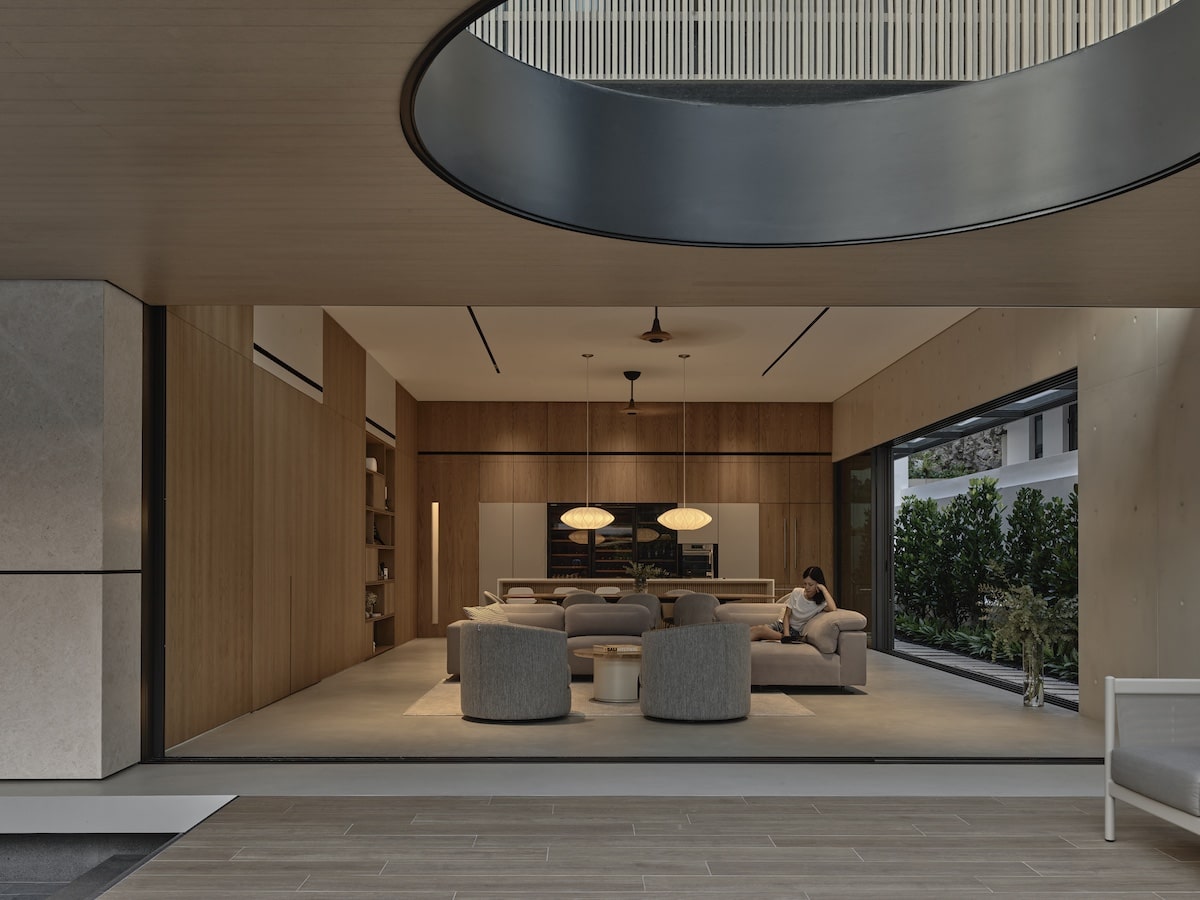
On the second storey, similar doors close off a private zone for the couple and their children, with both rooms adjoining a shared play area for private family time.
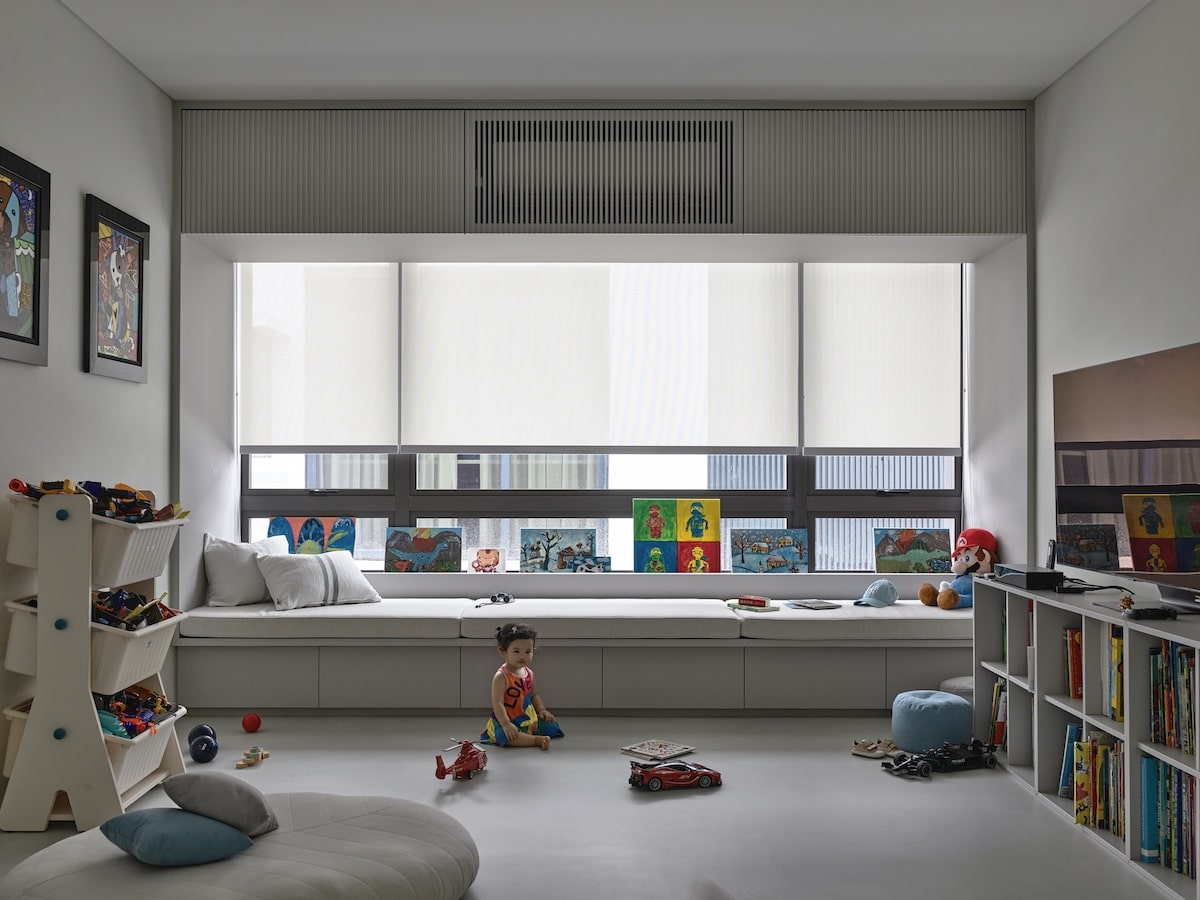
At the attic, a sliding screen door filters views into the family room, which is connected to the husband’s study and an exercise room for the wife who teaches Pilates. Futureproofing was important so the attic level can be converted into a suite and sliding panels in the children’s bedroom allow for potential room division.
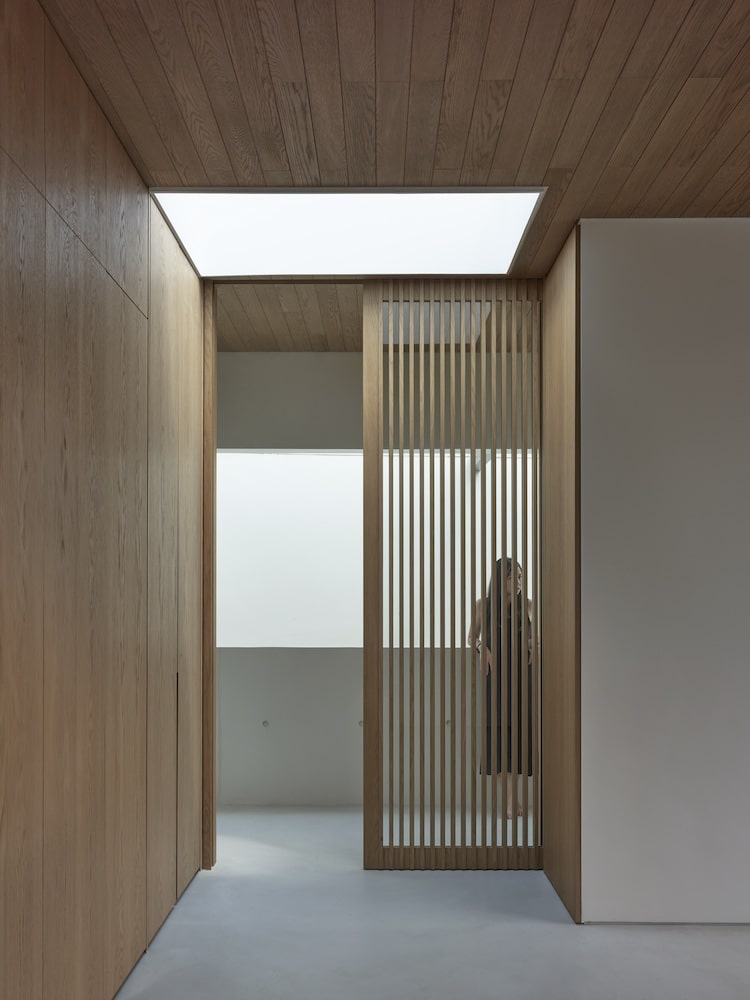
The bountiful daylight, generous proportions, and palette of light oak timber and white walls enhance the house’s airy character.
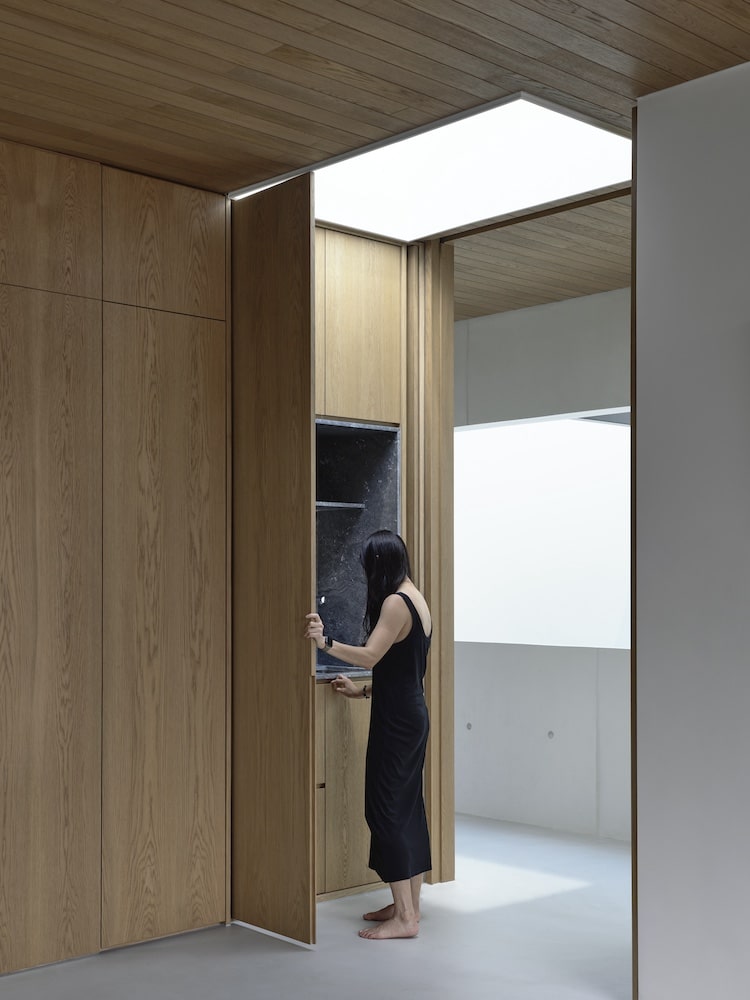
Within this minimal shell, details such as a solid oak railing carved into a recess in the party wall, reflect attention to detail.
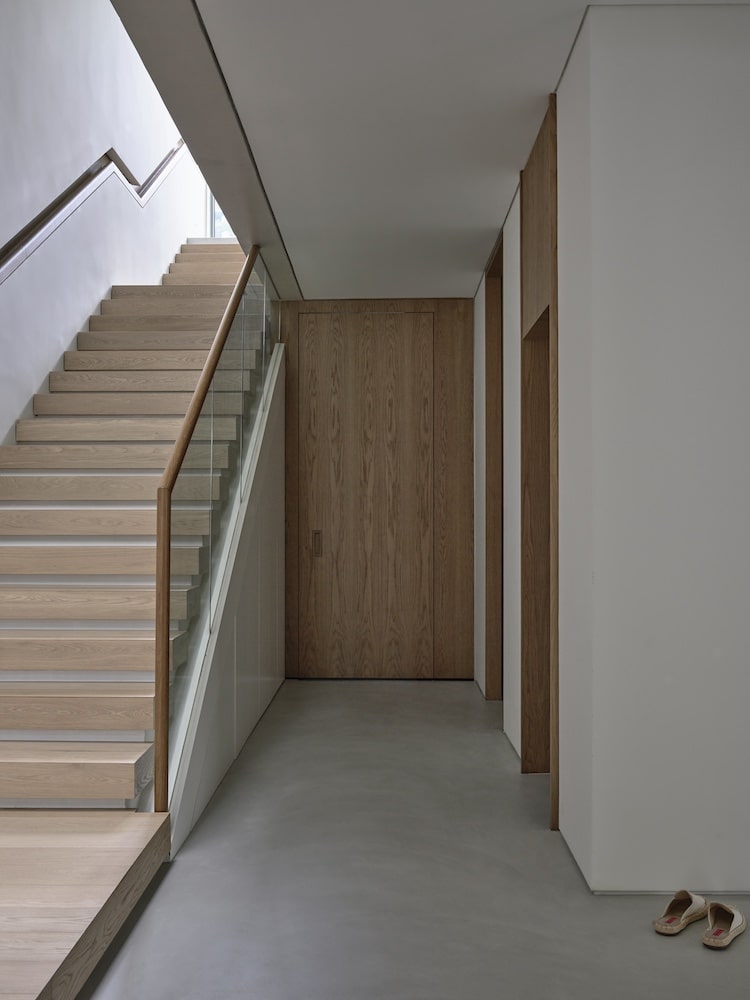
The house also welcomes dialogue with the outdoors through strategically placed windows, an attic balcony, and a verandah on the first storey.
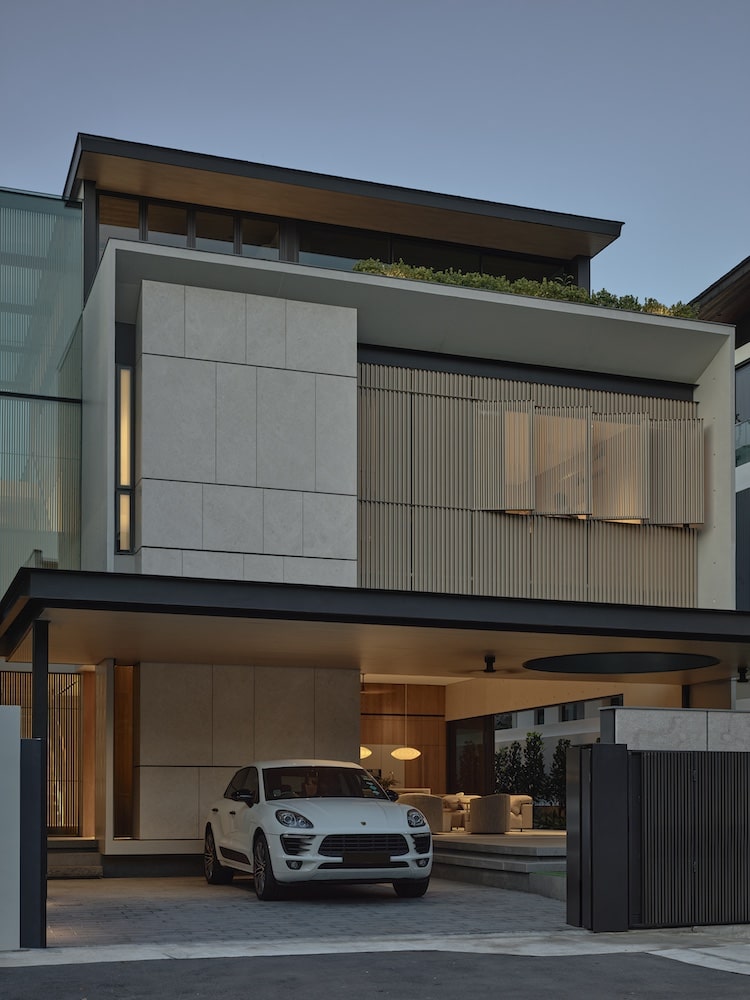
The latter extends the confines of the living area outward and is embellished with an oculus in the ceiling as a playful riff on the theme of skylights and connections.

